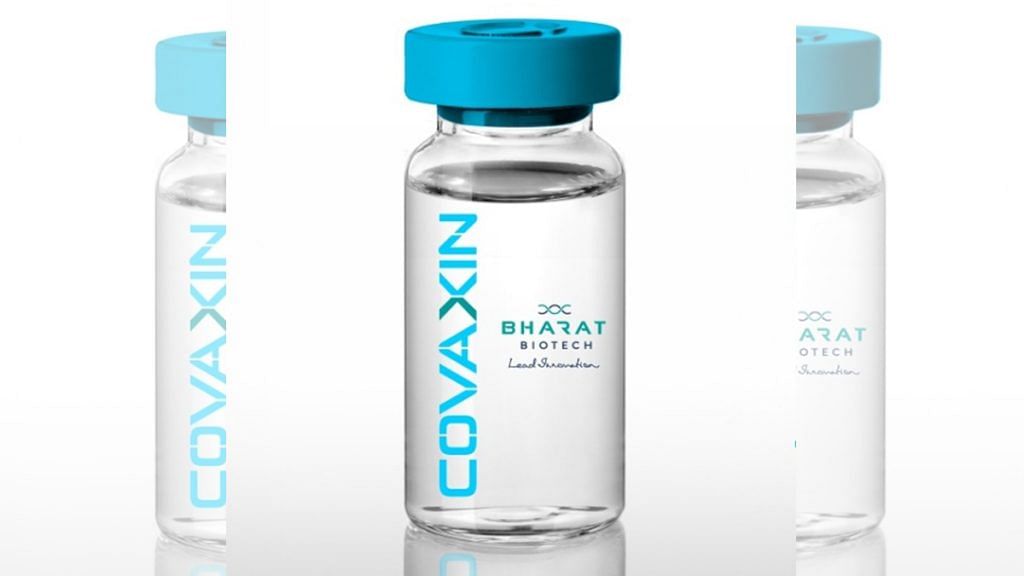New Delhi: In a research paper recently released by the Indian Council of Medical Research and Bharat Biotech about Covaxin, the Covid-19 vaccine they are developing, scientists have mentioned that one of the ingredients used is blood serum from newborn cattle.
The Covid vaccine is not the first to use this ingredient; blood serum from newborn cattle is a vital part of biological research, and is usually imported from other countries.
And though there are some artificial replacements now available, the wide availability of imported cattle serum products makes it a key part of the Covid vaccine development process. ThePrint explains how.
Also read: Phase-I trials of 2 Indian Covid candidate vaccines show excellent safety, says MoS Choubey
The science behind the use of newborn cattle blood
Covaxin falls in the category of inactivated vaccines, in which the pathogen is deactivated so that it can no longer cause infection. However, parts of the virus can still be identified by the body’s immune system, triggering a reaction.
To produce the vaccine, vero CCL-81 cells — a line of cells from the kidney of a normal adult African green monkey — are grown in the lab. These cells are then exposed to the SARS-CoV-2 virus in bioreactors under controlled conditions. The virus is then harvested after about 36 hours and inactivated.
The inactivated virus is mixed with adjuvants — substances known to enhance immune response. In the case of Covaxin, the adjuvants used are alum and a molecule known as imidazoquinoline, which helps the body better recognise RNA from viruses.
To grow cells in the lab, scientists need to provide conditions that allow cells to divide and turn into specific cell types required for their experiments.
For Covaxin, scientists used Dulbecco’s Modified Eagle Medium (DMEM), along with 5-10 per cent newborn calf serum. DMEM contains several essential nutrients required for cell division.
However, cells in multicellular organisms, in addition to depending on nutrients for division, require certain other special molecules called ‘growth factors’ to trigger individual cell types. Cells have receptors that respond to different growth factors. By regulating these growth factors, scientists can control what type of cells will grow.
“If the regulation of growth was just based on nutrients, we would just be a bag of similar cells. There would be no differentiation or specialised functions,” V. Radha, a scientist at the Council of Scientific and Industrial Research’s Centre for Cellular and Molecular Biology, explained to ThePrint.
“In order to restrict or promote growth in particular domains of an embryo, nature has set up a signalling cascade and the control is dependent on a set of molecules known as growth factors,” she said.
It took many years to understand this aspect of multicellular organisms, and it was only in the last 70 years that scientists could begin to culture cells or grow cells outside the body.
Also read: Oxford and Covaxin to Sputnik V — the many Covid vaccines in trial & how they’re faring
Ethical dilemmas made scientists shift to newborn calves
Scientists extensively used serum taken from cow foetus, which are very rich in these growth factors. To source this foetal serum, a pregnant cow is slaughtered and its foetus removed. The blood is then collected from the foetus and transported to a lab, where the serum is separated.
Over the years, due to ethical dilemmas and cruelty of this process, scientists shifted to the use of serum from newborn calves. In this case, blood is collected from the calf within three to 10 days of its birth.
“The only problem is that by then, the blood develops antibodies which can interfere with lab experiments,” Radha explained, adding that this can be especially problematic if the laboratory work involves growing types of white blood cells that are involved in the immune system of any animal.
This is overcome by exposing the serum to heat for a specific period of time, which deactivates the ‘complement system’ — a part of the immune response that triggers antibody activity.
Cattle blood serum can be much easier to source than any other type of animal, simply because of the availability of large cattle farms in countries like Australia, New Zealand and the US, Radha said.
She added that since cow slaughter is restricted in India, most of this blood serum is imported in large quantities by labs that perform any type of biological research.
According to data from the Ministry of Commerce, India imported close to $0.28 million (approx Rs 2 crore at current exchange rates) worth of cattle serum products in 2019-20. This year, the imports have significantly increased, with $0.21 million (approx. Rs 1.5 crore) worth of such products being imported between April and June.
Potential replacements
However, technologies have now developed where the serum can be replaced with synthetic or artificially generated growth factors.
Recombinant DNA technology, which involves putting together pieces of genetic coding from different organisms and inserting it into a host organism, allows scientists to artificially produce many of these growth factors in the lab.
Using DNA recombinant technology, however, is more expensive and requires specialised labs.
Cattle serum, as a by-product of the beef industry, is easier to procure, with a number of companies such as Sigma-Aldrich and Thermo Fisher Scientific marketing standardised formulations of the serum.
(With inputs from Remya Nair)
Also read: How the world can fight back the fear of a coronavirus vaccine
